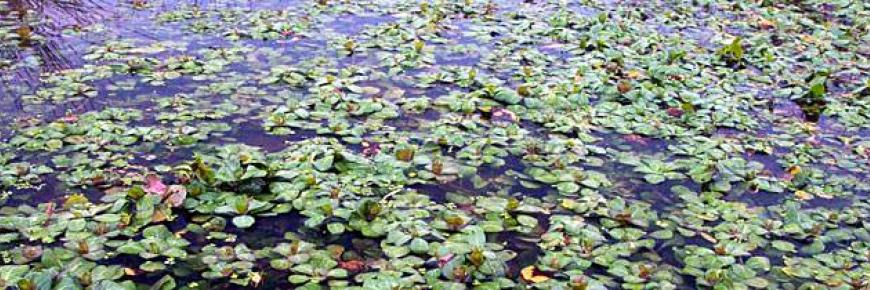A stinker of an invasive
 The majority of invasive plants present in Europe today have been introduced deliberately through the Horticultural trade. Many of the plants were imported from exotic locations and introduced to private gardens where they were free from their natural enemies. This gave the plants the opportunity to spread and become invasive. Famous examples of ornamental invasive plants include Himalayan Balsam and Japanese Knotweed.
The majority of invasive plants present in Europe today have been introduced deliberately through the Horticultural trade. Many of the plants were imported from exotic locations and introduced to private gardens where they were free from their natural enemies. This gave the plants the opportunity to spread and become invasive. Famous examples of ornamental invasive plants include Himalayan Balsam and Japanese Knotweed.
American Skunk Cabbage, Lysichiton americanus, is another example of an invasive ornamental plant. It is no surprise the plant was imported as an ornamental feature with its striking bright yellow ‘hood’, or more technically ‘Spathe’, which surrounds the smaller flowers on the ‘Spadix’. Another intriguing feature of the American Skunk Cabbage is its unusual ‘skunk’ odour which many people find unpleasant. If only the smell was the only unpleasant consequence of introducing American Skunk Cabbage…..
Impact
The American Skunk Cabbage is a wetland plant, colonising damp woodlands, streamsides and other ‘boggy’ habitats. Here the species has been known to grow dense stands, out-competing and out-shading other native species associated with these habitats. The American Skunk Cabbage is a particular problem in wetland habitats. A report commissioned by The Hampshire and Isle of Wight Wildlife Trust demonstrates that the American skunk cabbage can have a significant adverse impact on the native vegetation in ecologically important wet woodland habitats here in the UK. With wetland habitats ecologically important in many countries, this research proves the need for action against this species to protect these priority habitats.
These images clearly show how wetland habitats of the UK are threatened by the escape of this species.


You can help us keep track of the spread of the American Skunk Cabbage using our free app – ‘That’s Invasive’ available on Android and for the iPhone.
References
GBNNSS Website:
Klingenstein F. and Alberternst B. (2010): NOBANIS – Invasive Alien Species Fact Sheet – Lysichiton americanus. – From: Online Database of the European Network on Invasive Alien Species - NOBANIS www.nobanis.org, Date of access x/x/201x.
Sanderson, N (2013). ‘New Forest Non-native Plants Project Research on the Impact of Skunk Cabbage Lysichiton americanus on Native Vegetation’ The Hampshire and Isle of Wight Wildlife Trust. Click here for a copy
Photo Credits
All images courtesy of Hampshire & Isle of Wight Wildlife Trust

